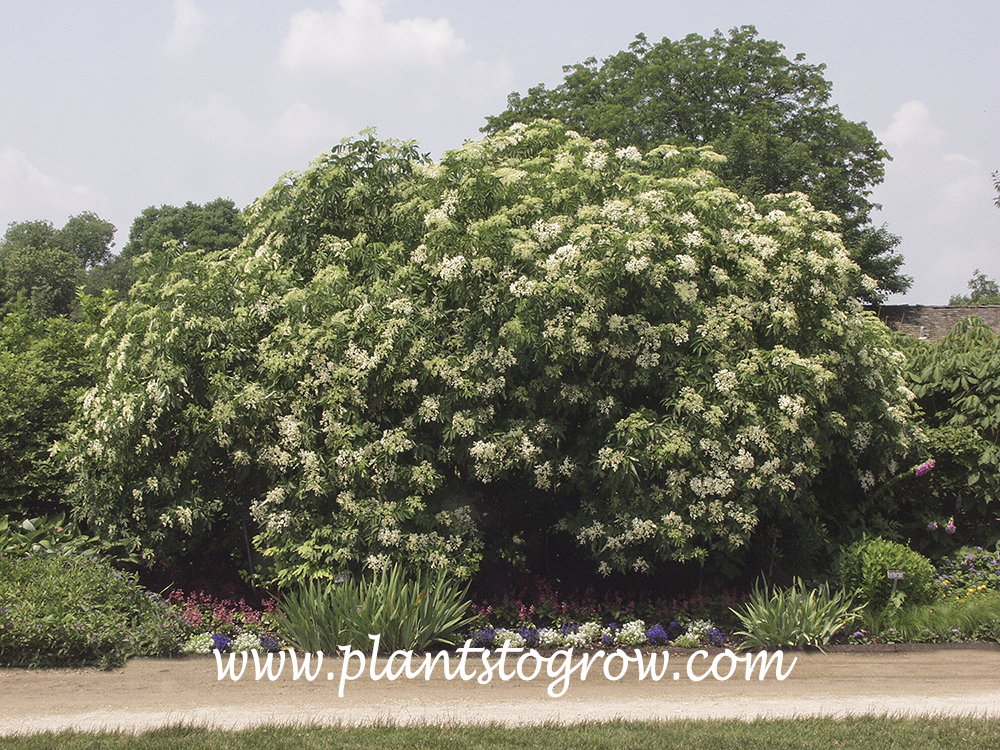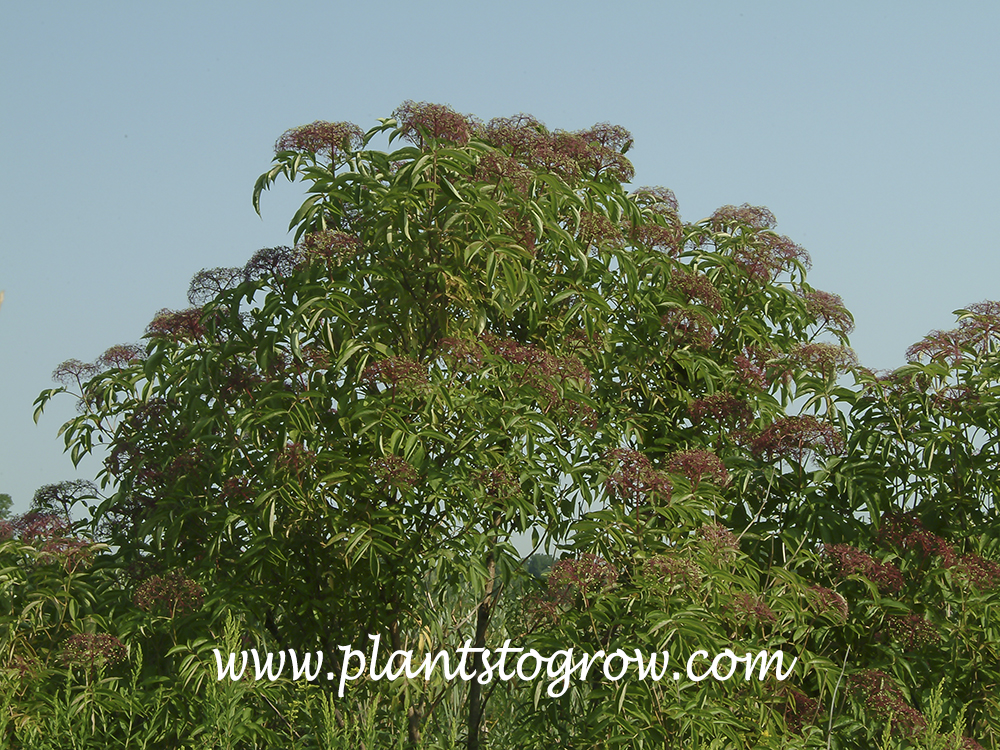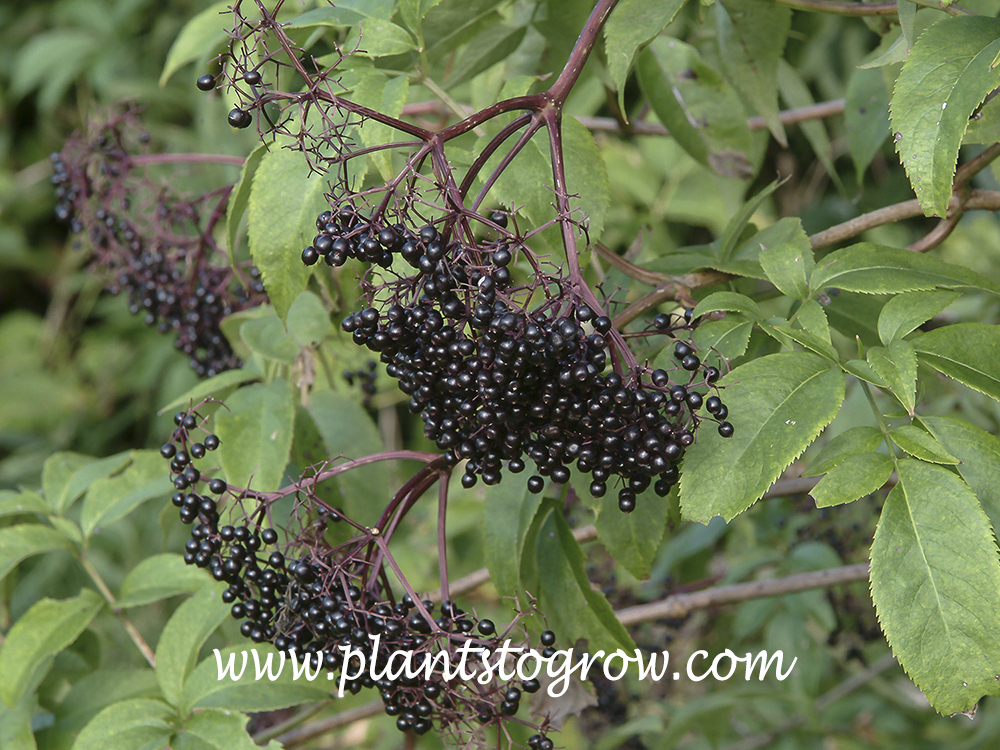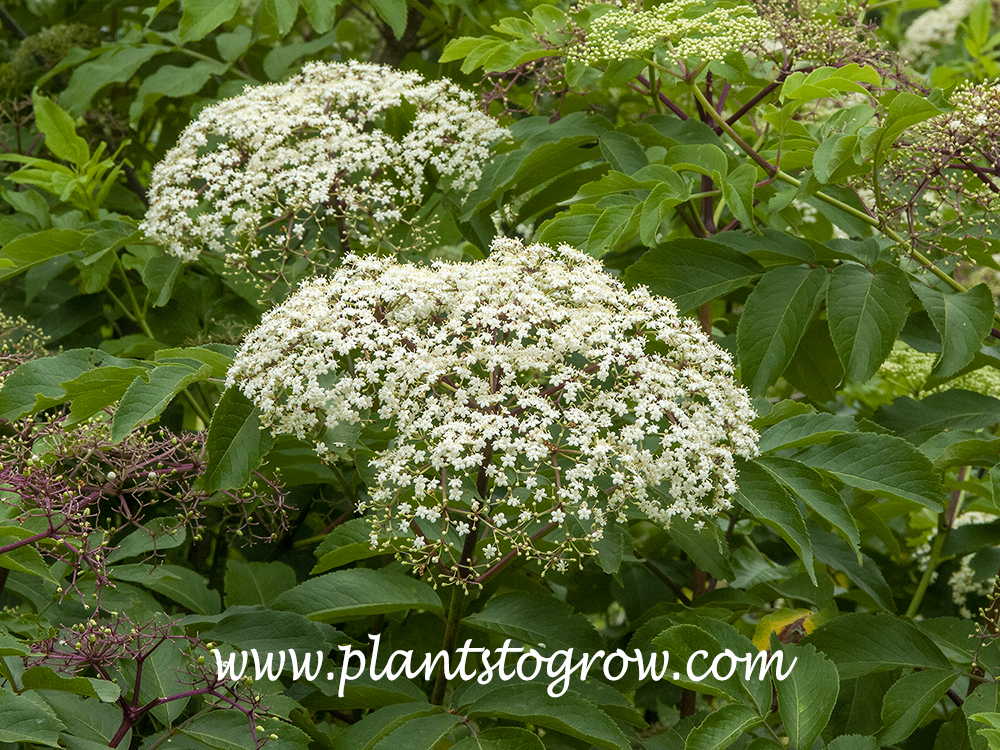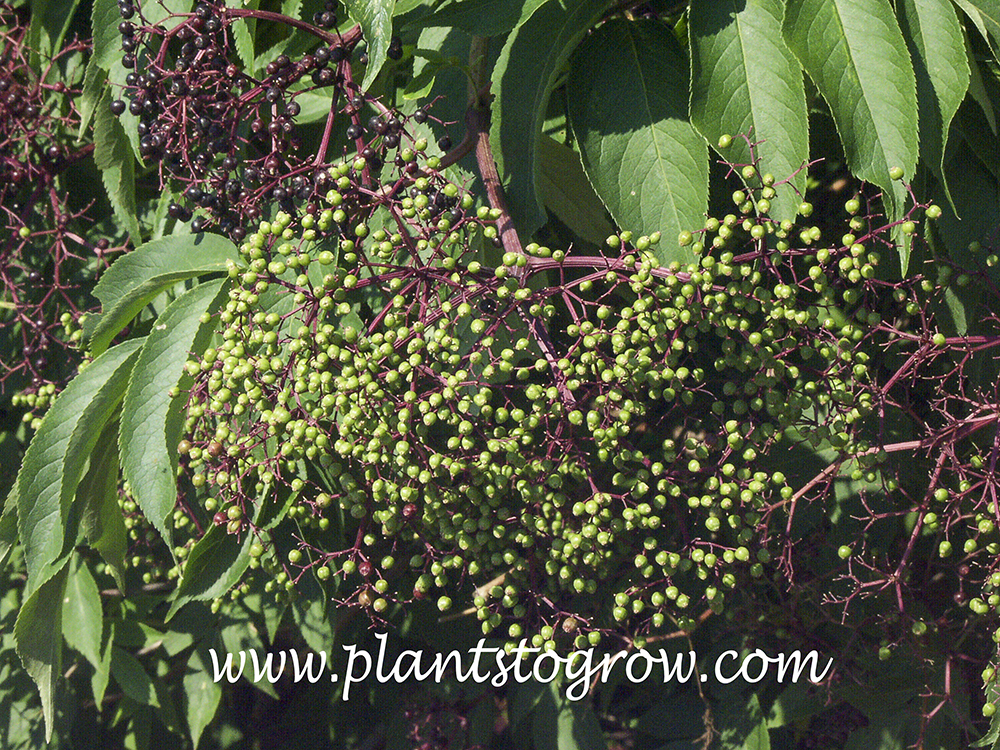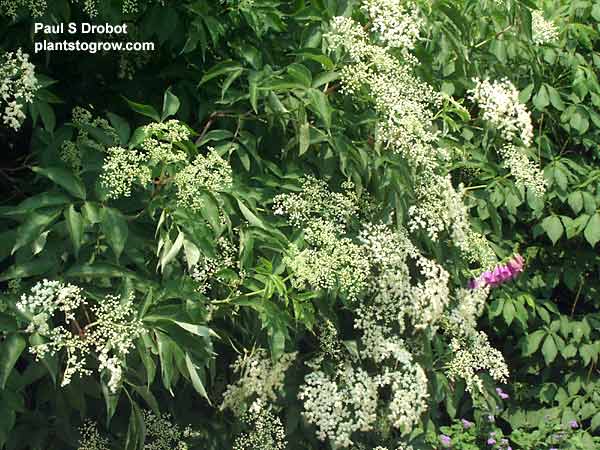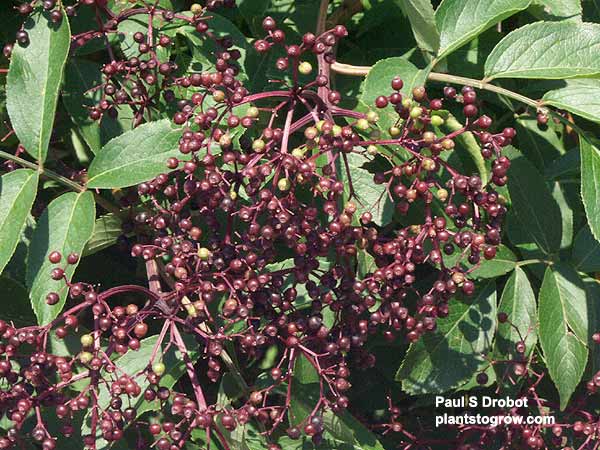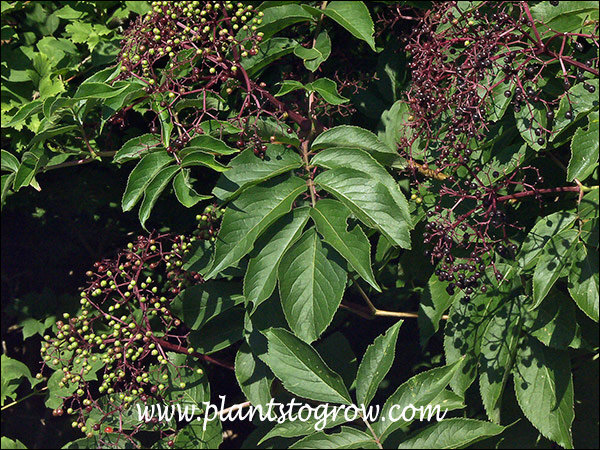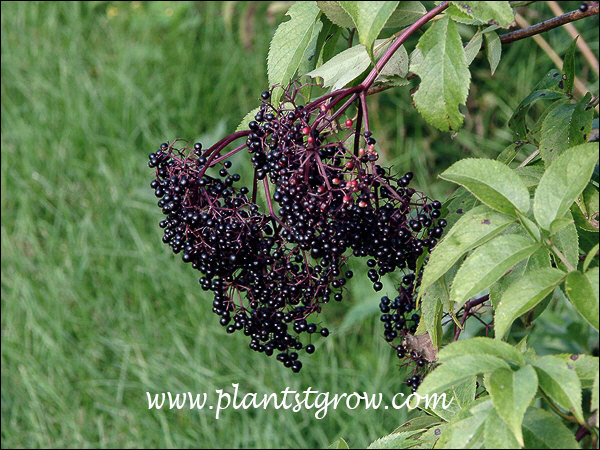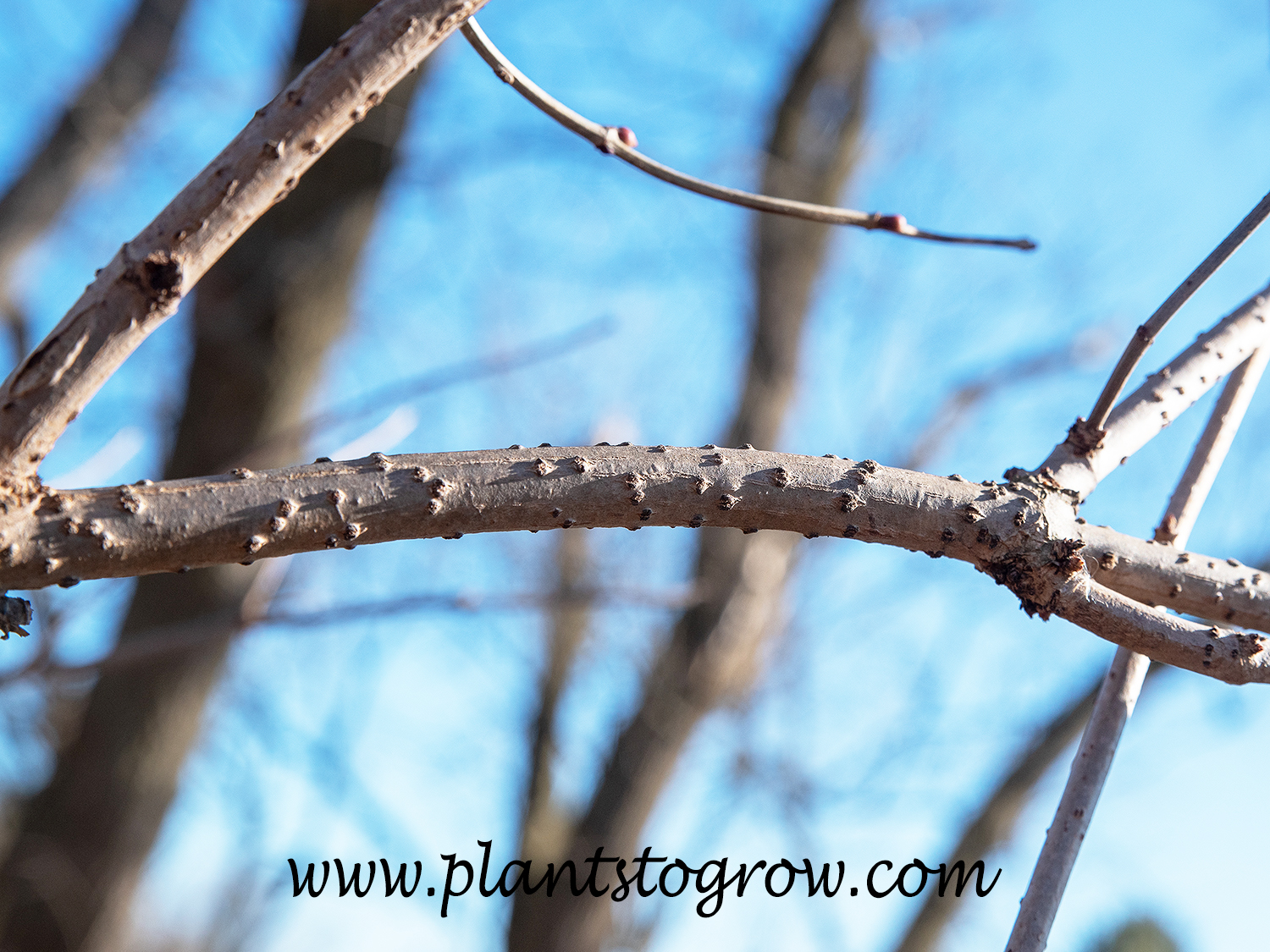| Description | American Elderberry (Sambucus canadensis) A medium-size native shrub with white flowers and a plethora of fruit. Likes moist, full sun sites but tolerates average conditions. |
|---|---|
| Pronunciation | (sam-BOO-kus)(can-AH-den-sis) |
| Plant Type | Shrubs Deciduous, Site author's observations |
| Hardiness Zone | 4-7 |
| Sunlight | full to partial sun |
| Moisture | prefers moist sites but will tolerate average, plants in my hard survived two seasons of growing in standing water during but this did cause damage to the plants but the suckered back from the base |
| Soil & Site | Found growing in open woodlands, moist areas such as ditches, moist meadows. Can be a shrubby invader of eastern prairies around rivers and flood plains. |
| Flowers | small, white, have a musk fragrance and occur in rather flat topped umbels |
| Fruit | plentiful, small purple drupes, used to make jams, jellies and wine, consumed by birds, also refered to as berry-like drupes |
| Leaves | opposite, pinnately compound, green during the summer and a weak yellow fall color |
| Stems | Forms suckers by underground stems, Have long straight, hollow stems that were used as arrows by Native Americans |
| Dimensions | 10-12 feet in height by equal spread (or larger), forms a medium to large rounded shrub, arches over when the branches are laden with fruit |
| Maintenance | plants have seeded all over in my gardens |
| Propagation | seeds |
| Native Site | Native to moist prairies, ditches and along rivers. |
| Misc Facts | Sambucus is derived from the Greek word "sambuca" a string instrument was supposedly made from the wood of the elder. The brewed fruit was used as a laxative, headache medicine and salves of honey and elderberry were used on burns and minor skin problems. AKA: Common Elderberry, Elderberry |
| Author's Notes | I have one of these growing in a fence line on my property. It is unbelievable how much fruit this plant produces. When the plant is full of fruit it's a pain, I get whacked in the face every time I mow the lawn. The plants have endured an extremely wet growing season (2019-2020) and were growing in standing water for an extended period of time. Produced much less fruit this year. It will be interesting to see how they look in the 2021 growing season. In the 2021 season, there was lots of dieback of branches, but the plants suckered from the bottom and are doing fine. Every spring I dig out volunteer plants, pot them up and give away to friends. |
| Notes & Reference | #01-Manual of Woody Landscape Plants (Michael Dirr) , #63-How to recognize Shrubs (Grimm), #75-Encyclopedia of Nuts, Berries, and Seeds (John Heinerman), #274-Site Authors' observations and growing experiences |

Cart
